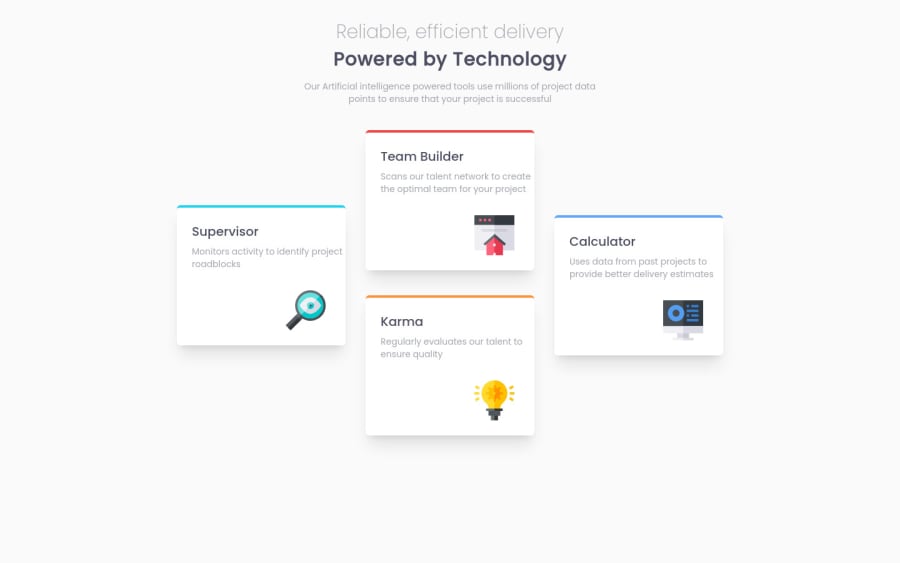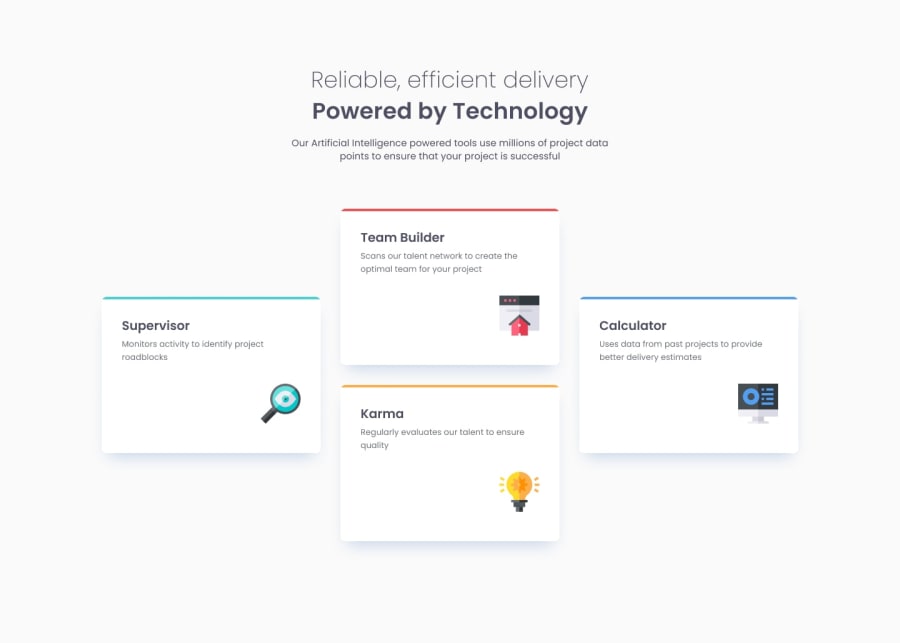
Submitted about 2 years ago
Responsive Four Card Feature Section using Tailwind CSS
#tailwind-css
@jayantghadge
Design comparison
SolutionDesign
Solution retrospective
Should we design Mobile or Desktop first? Tailwind makes the HTML page complicated to read and messy, is there any way to reduce the complexity? Suggestions are welcome. Thank you
Community feedback
Please log in to post a comment
Log in with GitHubJoin our Discord community
Join thousands of Frontend Mentor community members taking the challenges, sharing resources, helping each other, and chatting about all things front-end!
Join our Discord
